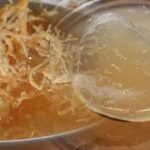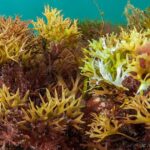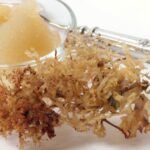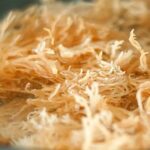Sea moss, scientifically known as Chondrus crispus, is a species of red algae widely recognized for its nutritional benefits and diverse applications in various industries. Understanding where sea moss grows is fundamental to appreciating its cultivation and ecological significance.
Primarily found along the Atlantic coasts of Europe and North America, sea moss thrives in rocky coastal environments, particularly in intertidal zones. These regions provide the ideal conditions for its growth, including moderate temperatures, turbulent waters, and ample sunlight.
Additionally, sea moss demonstrates adaptability, flourishing in both shallow and deeper waters. Exploring the specific habitats and ecosystems where sea moss proliferates offers insights into its natural distribution and aids in sustainable harvesting practices that preserve this valuable marine resource.
Unveiling the Habitat of Sea Moss: Exploring Its Natural Growth
Exploring the habitat of sea moss unravels its natural growth patterns. Primarily found in coastal regions, this algae thrives in areas with clear, nutrient-rich waters and moderate sunlight. Sea moss, also known as Irish moss or red algae, attaches itself to rocks or coral beds, forming dense clusters.
Its optimal habitat includes locations with a balanced temperature range and minimal pollution. Understanding the intricacies of its natural growth aids in sustainable harvesting practices. Explorations into this habitat offer insights into preserving these environments, essential for the continuous availability of this valuable marine resource.
Geographic Distribution: Where Sea Moss Thrives
The geographic distribution significantly influences where sea moss thrives. This algae species predominantly grows along the Atlantic coastlines of Europe, North America, and the Caribbean. Coastal regions with clear, nutrient-rich waters and moderate temperatures foster optimal conditions for sea moss cultivation.
Countries like Ireland, Jamaica, and parts of the United States, particularly Maine and Florida, boast ideal habitats for sea moss. These areas provide the necessary environmental factors—adequate sunlight, proper water salinity, and low pollution levels—essential for its growth.
Understanding the geographic distribution is pivotal for both natural growth and commercial cultivation, emphasizing the significance of these specific coastal ecosystems in supporting the thriving presence of sea moss.
Examining Regions and Conditions Favorable for Sea Moss
Examining regions and conditions favorable for sea moss reveals coastal zones with temperate climates, abundant sunlight, and low pollution levels as optimal environments. These algae thrive in areas with clear, nutrient-rich waters and moderate temperatures, found in regions like the Caribbean, Ireland, and parts of the Atlantic coast.
The intertidal zones provide the ideal habitat, where sea moss attaches to rocks or seabeds, benefiting from tidal movements and adequate sunlight. Understanding these preferred conditions helps in identifying prime locations for sustainable sea moss cultivation and harvesting practices.
Ecosystems Supporting Sea Moss Growth: Coastal Insights

Coastal ecosystems play a pivotal role in supporting the growth of sea moss. These environments, characterized by their unique blend of saline waters and optimal sunlight exposure, provide the ideal conditions for sea moss cultivation.
Sea moss thrives in rocky intertidal zones along coastlines, clinging onto rocks and thriving in areas with minimal pollution and strong water movement. The interplay between the tides and sunlight availability in these coastal regions fosters the growth of healthy and robust sea moss colonies.
Understanding these coastal insights is crucial for sustainable harvesting practices and preserving the delicate balance of these ecosystems that nurture the growth of this valuable marzne resource.
Coastal Areas and Their Role in Sea Moss Cultivation
Coastal areas play a pivotal role in sea moss cultivation due to their nutrient-rich waters and optimal conditions. Sea moss thrives in these environments, benefiting from the ocean’s mineral content and the gentle movement of tides.
These coastal regions provide the perfect balance of sunlight and temperature, crucial for the growth and development of sea moss. Cultivators harness these natural coastal ecosystems, carefully tending to the seaweed in its native habitat to ensure a bountiful and sustainable harvest.
Harvesting Sea Moss: Locations and Techniques
Harvesting sea moss involves strategic selection of locations and meticulous techniques. Coastal regions, especially in colder waters like Ireland, Jamaica, and parts of the Caribbean, foster optimal sea moss growth. Skilled harvesters venture into these coastal areas, often diving or wading into shallow waters to hand-pick the moss.
They employ sustainable methods, carefully cutting the moss close to the holdfast to allow regrowth and maintain ecosystem balance. Post-harvest, thorough cleaning and natural drying processes ensure quality.
Techniques vary, with some communities using traditional sun-drying methods, while others opt for modern dehydration technologies. Understanding the nuances of location selection and precise harvesting techniques is crucial in sustaining this valuable marine resource.
Exploring Methods and Practices in Sea Moss Collection
Exploring methods and practices in sea moss collection unveils diverse harvesting techniques. Coastal communities employ handpicking, ensuring minimal ecological impact. Some opt for sustainable farming, cultivating sea moss on ropes in controlled aquatic environments.
These methods balance resource utilization while preserving natural habitats. Understanding these collection practices offers insights into sustainable sourcing and ethical harvesting of this valuable marine resource.
Environmental Impact: Sustainable Growth and Conservation Efforts

The environmental impact of sea moss cultivation emphasizes the need for sustainable practices and conservation efforts. Cultivating sea moss sustainably involves careful consideration of harvesting techniques to ensure minimal disruption to coastal ecosystems.
By implementing responsible gathering methods and promoting conservation initiatives, communities can safeguard sea moss populations and the biodiversity of marine habitats. Embracing sustainable growth practices not only supports the longevity of sea moss but also preserves the delicate balance of coastal environments, fostering a healthier ecosystem for future generations.
Balancing Harvesting and Preservation for Sea Moss
Balancing the harvesting of sea moss with preservation efforts is vital for sustaining this valuable marine resource. Careful extraction practices, ensuring a portion of the moss remains to regenerate, play a pivotal role.
By implementing controlled harvesting and promoting preservation initiatives, we safeguard the ecosystem’s health while meeting the growing demand for sea moss. This equilibrium ensures the continuous availability of this nutrient-rich seaweed while respecting its natural habitat and fostering long-term sustainability.
Commercial Cultivation: Modern Techniques and Global Growth
In the realm of sea moss, commercial cultivation has witnessed a revolution, embracing modern techniques for global expansion. Advanced methods like aquaculture and controlled environments optimize sea moss growth, ensuring consistent quality and quantity.
Through controlled temperature, lighting, and nutrient regulation, commercial cultivation maximizes yields year-round, lessening dependence on wild harvesting. This shift toward modern practices not only meets escalating demand but also fosters sustainability by reducing the ecological impact of excessive harvesting from natural habitats.
Moreover, global trade and technological advancements facilitate the widespread availability of sea moss products, contributing to its recognition as a valuable marine resource in various industries, from cosmetics to health supplements. Commercial cultivation stands at the forefront, steering sea moss toward a sustainable and thriving future.
conclusion
The growth of sea moss is intricately tied to specific coastal ecosystems and ideal environmental conditions. Understanding where sea moss grows is pivotal in preserving and sustainably harvesting this valuable resource.
Coastal regions with cool, temperate waters and ample sunlight provide the perfect habitat for sea moss to thrive. These algal species anchor themselves to rocky substrates in shallow waters, flourishing in areas with low pollution levels and adequate water movement. Additionally, sustainable cultivation methods have emerged to ensure the preservation of natural habitats while meeting the growing demand for sea moss.
By embracing responsible harvesting practices and protecting these ecosystems, we can safeguard the continued growth and availability of sea moss for future generations while maintaining the delicate balance of our coastal environments.










